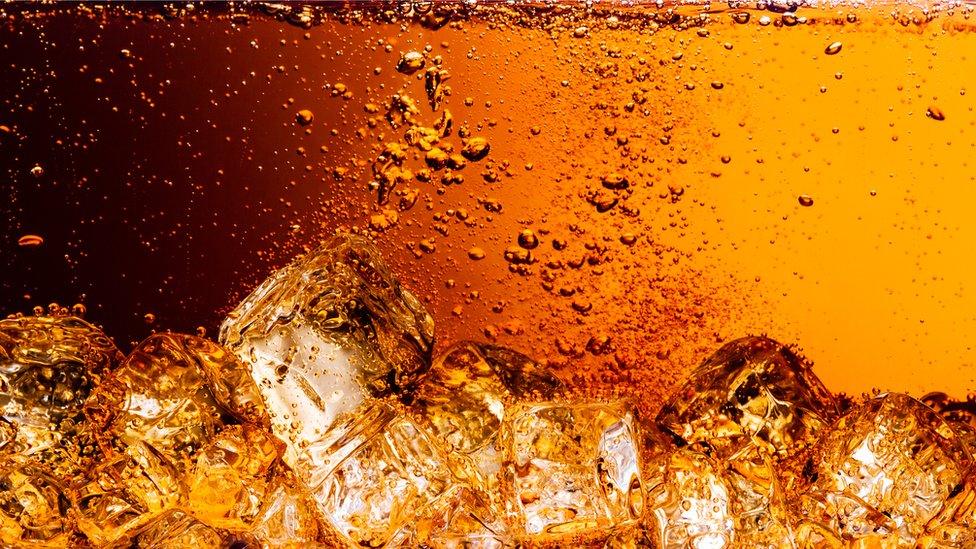Teens 'drink enough sugar for cola bath'
- Published
- comments

UK teenagers drink enough sugar every year to fill a bathtub with fizzy cola, a Cancer Research UK study suggests.
The charity looked at data from the 2015 national diet survey and found children of all ages were consuming too much sugar in drinks, although there had been an improvement on 2014.
Drinks are teenagers' main source of added sugar, and too much can lead to obesity and health problems.
In March, the government promised a tax on sugary drinks in England.
A five-year-old should have no more than 19g of sugar in a day, a 10-year-old no more than 24g, and teenagers and adults no more than 30g.
A typical can of cola contains 35g (nine teaspoons).
The survey data suggests:
Pre-school children drink the equivalent of nearly 70 cans of fizzy cola
Children aged four to 10 drink the equivalent of 110 cans a year (nearly half a bathtub)
Teenagers drink more than the equivalent of 234 cans each a year (a bathtub)
When the sugar tax comes in, soft drinks companies will pay a charge for drinks with added sugar and a total sugar content of 5g or more per 100ml (about 5%).
But drinks with a high milk content will be exempt because milk contains calcium and other nutrients the government says are "vital for a healthy diet".
Alison Tedstone, chief nutritionist at Public Health England, said: "The sugar levy is a good way to help cut intakes, but children get sugar from many sources.
"We're also working with businesses and retailers to gradually take sugar out of the food children eat the most, so we can cut sugar intakes across the whole diet, not just drinks."
The British Soft Drinks Association said: "Teenagers' sugar intake from soft drinks is down by 8%.
"This is not surprising since soft drinks companies' action on reformulation and smaller pack sizes has helped drive a 17% cut in sugar consumed from soft drinks since 2012."
- Published16 March 2016
- Published3 November 2016